DIY Cedar Chest Makeover with General Finishes Milk Paint
Today I’m sharing one of the best ways to paint furniture without brush marks on this lane cedar chest. Plus we’re adding in a little extra something for the top and legs! Let’s dive into the DIY cedar chest makeover!
Get more painted cedar chest ideas here!
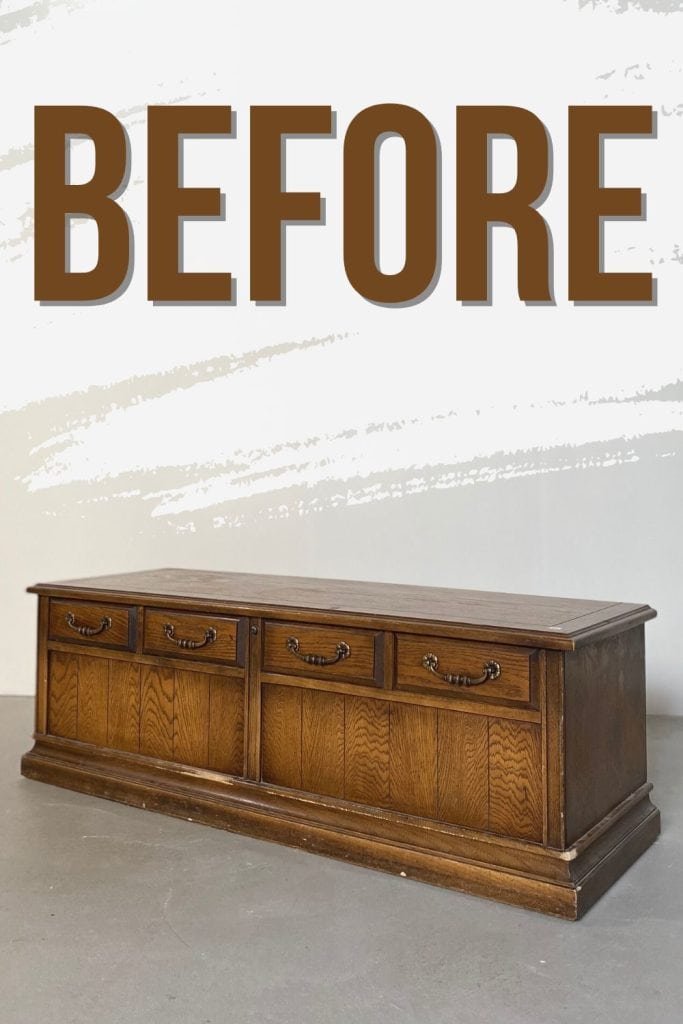
This is what the cedar chest looked like before. First, we added legs to the bottom of the cedar chest. You can see how we added legs to the cedar chest here!
So here’s what it looks like with cute little bun feet!

Now it’s time to flip this cedar chest and paint it without any brush marks!
Supplies Used for this DIY cedar chest makeover
As an Amazon Associate, I earn from qualifying purchases. I also may earn from other qualifying purchases with other companies or get free product to review and use. All opinions are my own.
- Electric Screwdriver to remove hardware
- KwikWood to fill in hardware holes
- Disposable Vinyl Gloves
- Wood Filler
- 3×4 Vacuum Compatible SurfPrep Sander Use code RAY10 to get 10% off your order
- Foam Sanding Pads Use code RAY10 to get 10% off your order
- Krud Kutter Cleaner Degreaser
- Shop Vac
- Tack Cloth
- Clear Shellac
- General Finishes Milk Paint – China Blue and Driftwood
- Zibra Round Brush
- Paintable Caulking
- Varathane Water Based Polyurethane
- Fuji Q4 Paint Sprayer
- Card Catalog Pulls
- Screws for Card Catalog Pulls
Grab our list of 10 must have painting furniture supplies too!
Prep Cedar Chest for Paint
I started by removing the hardware and filling in the hardware holes so I could put new hardware on the fake drawers.
NOTE: The lock on lane cedar chests is recalled, so we removed the latch on the top before we did anything! Then we ordered a new latch through their recall website.
This Kwikwood epoxy is the easiest and best stuff to use to fill in hardware holes because it dries super hard in an hour and it doesn’t shrink, crack or have air bubbles in it.
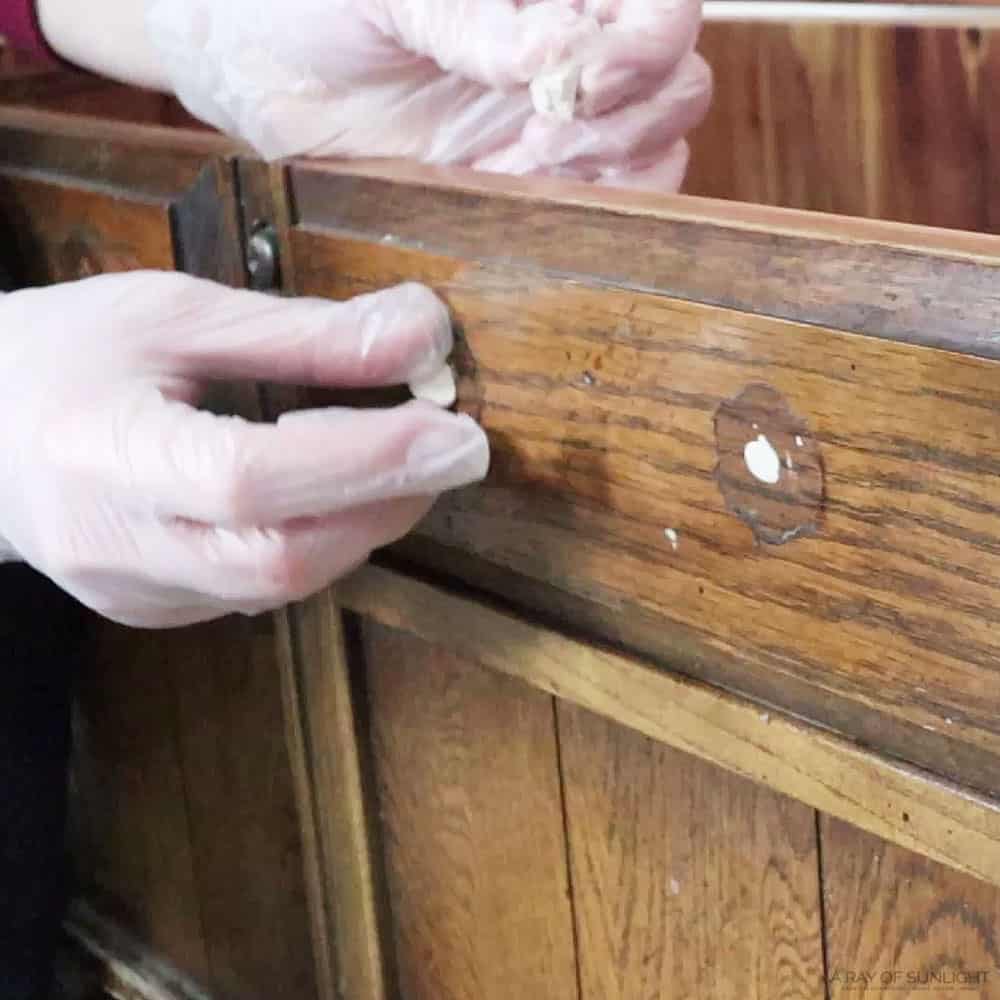
So you fill the holes once, sand the Kwikwood down, and then you can’t even tell there used to be holes there!
I also filled the little indentations that were left by the outline of the old hardware with some basic wood filler. Read more about the best wood fillers for furniture here!
Repairing Chewed Up Corners of Cedar Chest
I also used the Kwikwood to repair the chewed-up corners that were worn down. Check out this other method we have used to fix a chipped wood corner here!
Here’s another guide on how to fix dog chewed wood trim to learn more.
I just formed the Kwikwood with my fingers to the shape of what the corner should have been. And then I let the Kwikwood and wood filler dry for an hour. Learn more about how to use KwikWood here.
Then I used my SurfPrep sander to sand the wood filler and Kwikwood down to be flush with the wood. And I used these foam sanding pads on my sander to help shape the repaired corners.
Get the Secrets!
Grab this super convenient How to Repair Furniture Ebook with all of our secrets on how to repair furniture for only $14.
You can print it out and have instant access whenever you come across damaged furniture, and know exactly how to fix it!
Click on the picture of the book to purchase!
I also taped off the inside of the cedar chest so I wouldn’t accidentally get any paint on the cedar. Learn more about how to prevent overspray when painting furniture here!
At this point, I realized that I forgot to clean the cedar chest before working on it, so before I did anything else, I busted out my favorite cleaner, Krud Kutter, and an old damp rag to clean all the dirt and grime off of the cedar chest.
Learn more about how to clean furniture before painting here.
Scuff Sanding Cedar Chest
Once the cedar chest was dry, I scuff-sanded the cedar chest with my favorite little SurfPrep sander.
Scuff sanding not only makes the paint stick better, but it gave me a chance to smooth out anything that was a little chewed up on the edges.
Read more here about the importance of sanding before painting furniture.
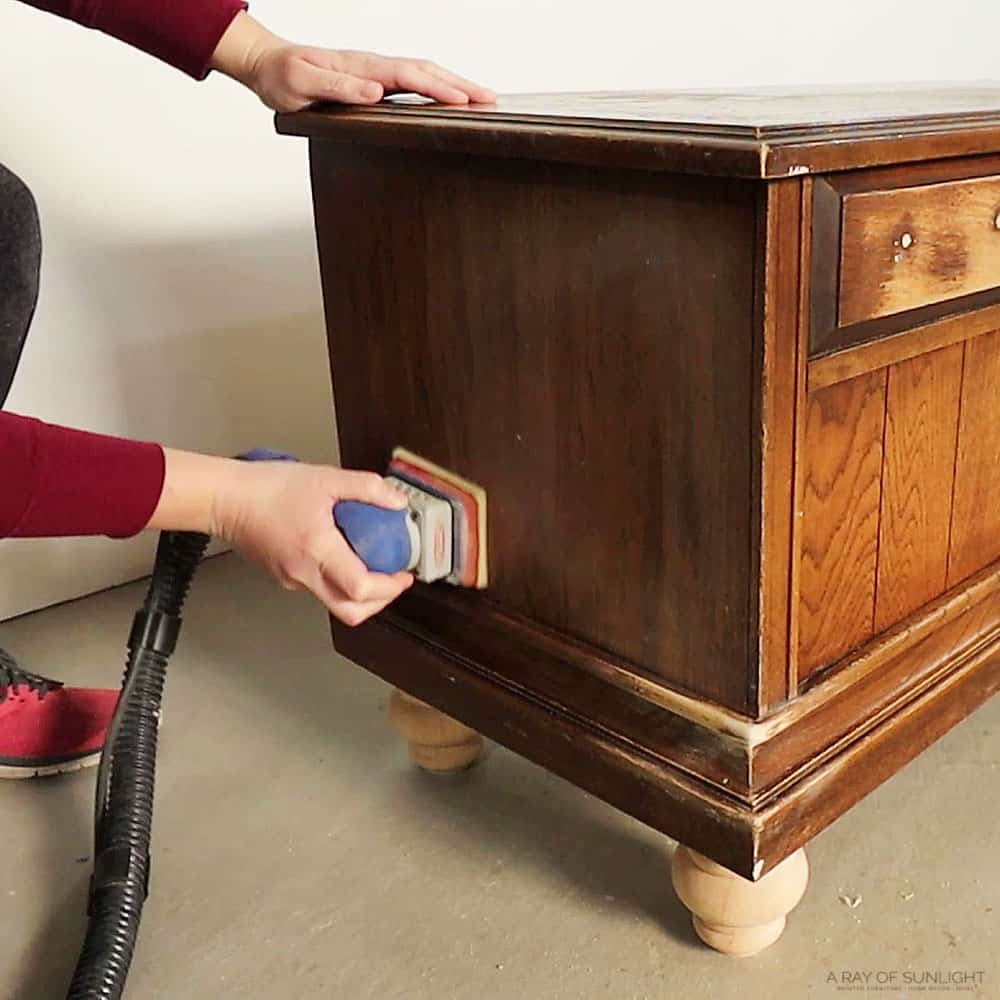
Last year I invested in this SurfPrep sander to make sanding furniture go so much faster!
It has these foam pads so I can easily sand the details and trim. It’s also small and square so it fits in smaller areas and gets nicely into corners.
When I got to the top of the cedar chest, I went a little crazy and I ended up sanding the entire top down to bare wood!
The top WAS in pretty rough shape, so I’m really glad I just sanded it down to remove a lot of the scratches and damaged finish. It was totally worth the extra work!
Then I used my shop vac to suck up all of the dust left behind and wiped it all down with a tack cloth to get off the remaining dust.
Priming a Cedar Chest
The one last thing that I like to do before painting furniture is to prime it in some sort of way.
Not necessarily to help the paint stick (though it does definitely help the paint stick a little better), but to prevent the wood from staining the paint.
It’s called bleed through, and it doesn’t ALWAYS happen, but when it does happen, it’s SO frustrating! So I always prime to prevent bleedthrough from happening.
This time, since I wasn’t sure if I was going to distress the paint or not, I used clear shellac in a spray can.

Learn more about the best primers for painting furniture (and how to choose the right one) here.
Painting a Cedar Chest
I wanted to paint this cedar chest without using my paint sprayer this time to show that it is possible to get a professional finish even if you don’t have a paint sprayer!
Keep reading below to discover some of the tricks we used to paint this cedar chest without getting brush marks in the final finish!
How to Paint Furniture Without Brush Marks
So, the trick to getting a brush-free finish is using a self-leveling paint.
Yeah, you can paint furniture without brush marks with other paints too, but the easiest way ever is to start with the right type of paint. Read more about the best paint for furniture here.
And to have a good paintbrush. Head on over to this post to learn all about the best paint brushes for painting furniture.

General Finishes milk paint is definitely a self-leveling paint, and it’s actually made for painting furniture and cabinets. It’s an acrylic, water-based paint. So it’s easy to clean up with soap and water.
Check out this post for everything you need to know about painting furniture with acrylic paint.
General Finishes milk paint also is self-sealing, so on any surface that isn’t high traffic, you can technically get away without top coating it.
Check out my in-depth General Finishes Milk Paint Review here.
Read more about how to paint furniture without brush marks here.
But let’s be honest, I still always seal it with a water-based topcoat to make sure it’s as durable as possible. And with kids around, what isn’t a high-trafficked surface right?!
Learn all about the pros and cons of different topcoats for painting furniture here!
Mixing Paint Colors
I wasn’t absolutely loving any of the colors I had on hand for this cedar chest, so I mixed up 2 of their colors in about a 1-to-1 ratio.
I mixed 1 part china blue with 1 part driftwood and it made the prettiest warm slate blue!
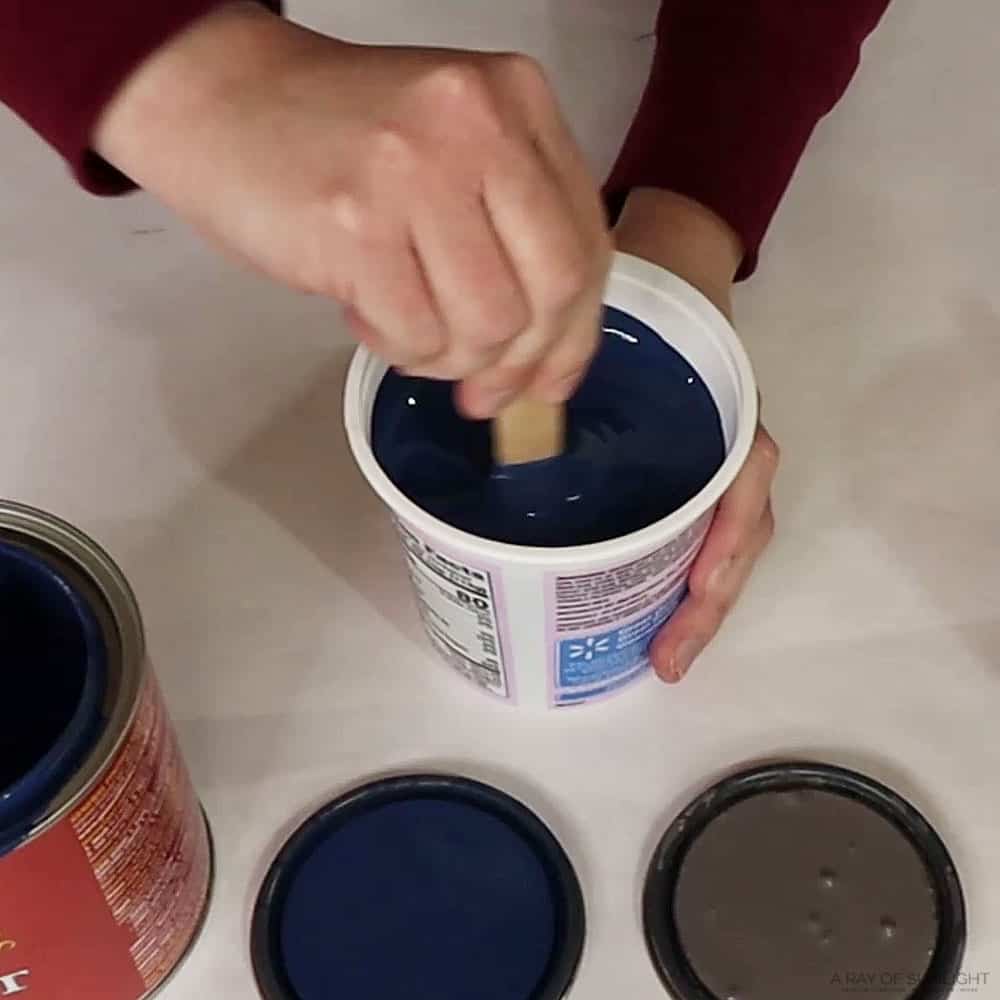
Painting With Zibra Round Paintbrush
Then I used my very favorite round paintbrush from Zibra to paint the General Finishes milk paint all over the cedar chest. Zibra’s paint brushes are high quality, but they don’t break the bank!
I also love that they come in different shapes to help you get into details easier. The round brush is my favorite though because it makes painting curves and details on furniture super easy.
Seriously, if you try a Zibra round brush, you won’t ever want to go back to a regular flat paintbrush!

While I was painting, I tried my best to paint in small sections, and then before I moved on to the next section, I brushed the paint from edge to edge in the direction that the wood grain goes.
Painting longer brushstrokes that are all even really helps create a brush-free finish too, and if you do end up with any brush strokes, it just looks like the wood grain!
Before I left it to dry for a couple of hours, I walked around and made sure I didn’t have any drips in my paint, or areas where the paint was thick enough to create a drip while it was drying.
And then I wrapped my paintbrush with some plastic wrap to keep it wet while the cedar chest dried.
Caulking
After it was dry, I filled in these lines that just looked horrible with some paint in them.
I used paintable caulking to fill them in, and I wiped the excess caulking off with a damp rag. This stuff is paintable after only 20 minutes, so I was back to painting a second coat pretty fast!
This paint has really good coverage so I really only needed two coats total to get full coverage. After the second coat, I let it all dry for another 2 hours.
Whitewash Cedar Chest Top and Legs
While I waited for the paint to dry, I worked on the top of the cedar chest and the legs.
I wanted to go for a raw wood, whitewashed type finish, but the top of the cedar chest was really rustic and I intentionally had left some of the old dark stain in the corners.
So I needed to make the legs look the same. And then whitewash both. Check out this how to whitewash furniture post to learn how we whitewashed the cedar chest’s top and legs here!
You can also read through this post to learn how to whitewash wood. And check out more whitewashed furniture ideas here.
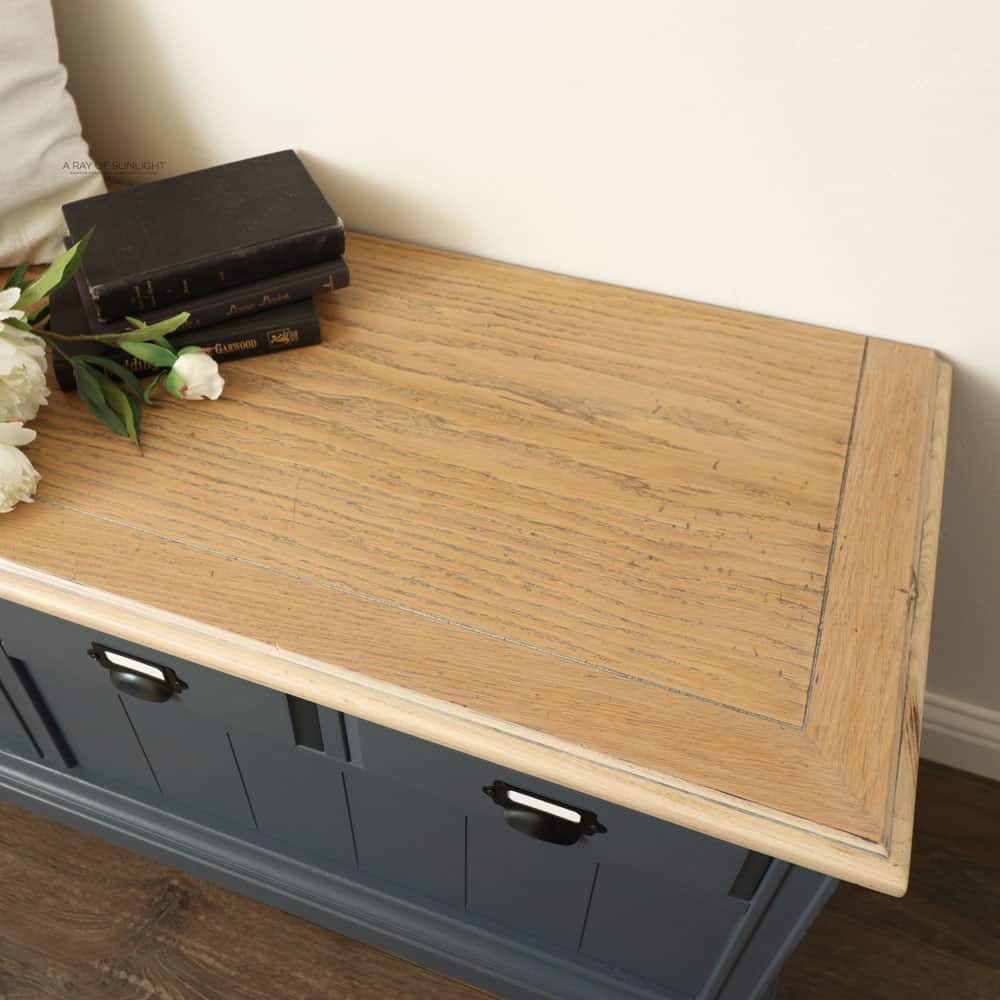
Topcoat Painted Cedar Chest
To finish it all off, I sprayed the whole cedar chest with 3 coats of my favorite water-based poly topcoat.

Technically I could have just top coated the whitewashed wood, because you don’t HAVE to seal general finishes milk paint when it’s not a high-traffic surface.
But, I love the added durability of the topcoat, and my paint sprayer makes it easy to topcoat everything!
Check out this post to learn how to spray polyurethane with a paint sprayer! It seriously is my favorite way to apply a topcoat to painted furniture!
Watch the video of this makeover here, or keep scrolling to see what it looks like now!
And here’s what it looks like now!
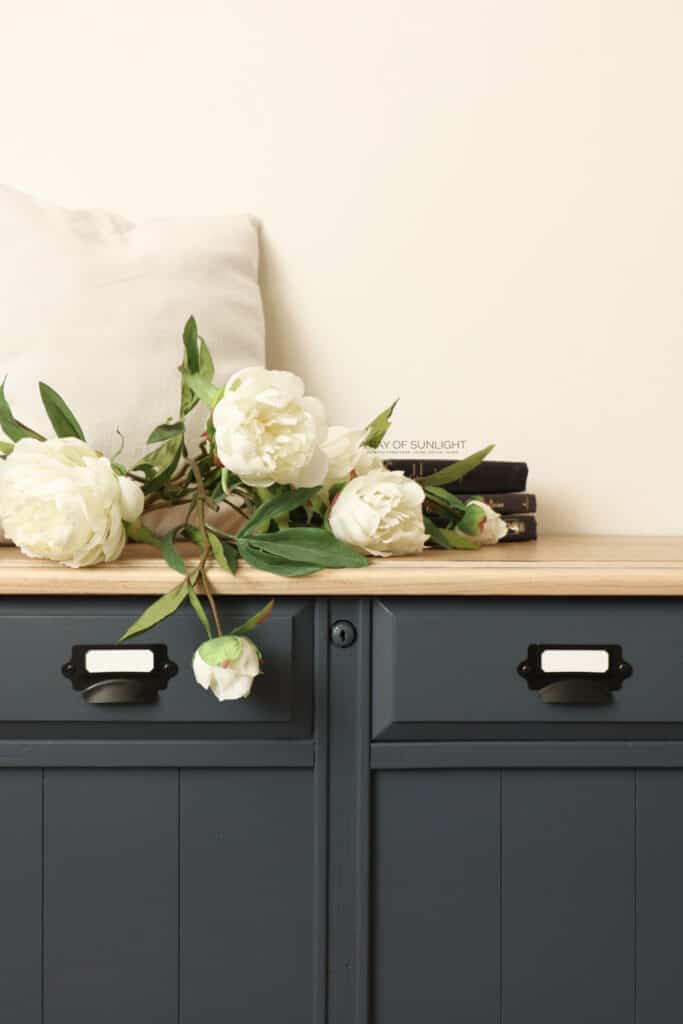

More Before And After Makeovers
Click any of these “before” photos below to view the “after” of that makeover.
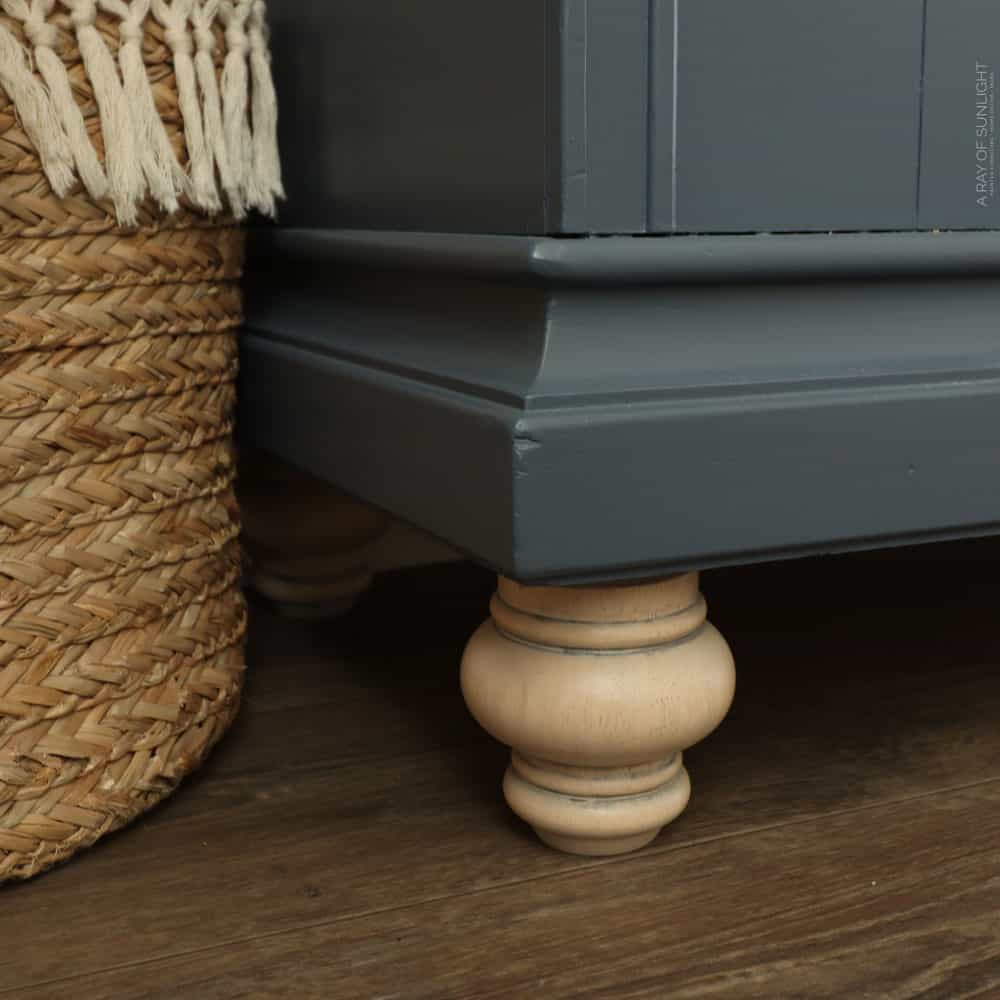
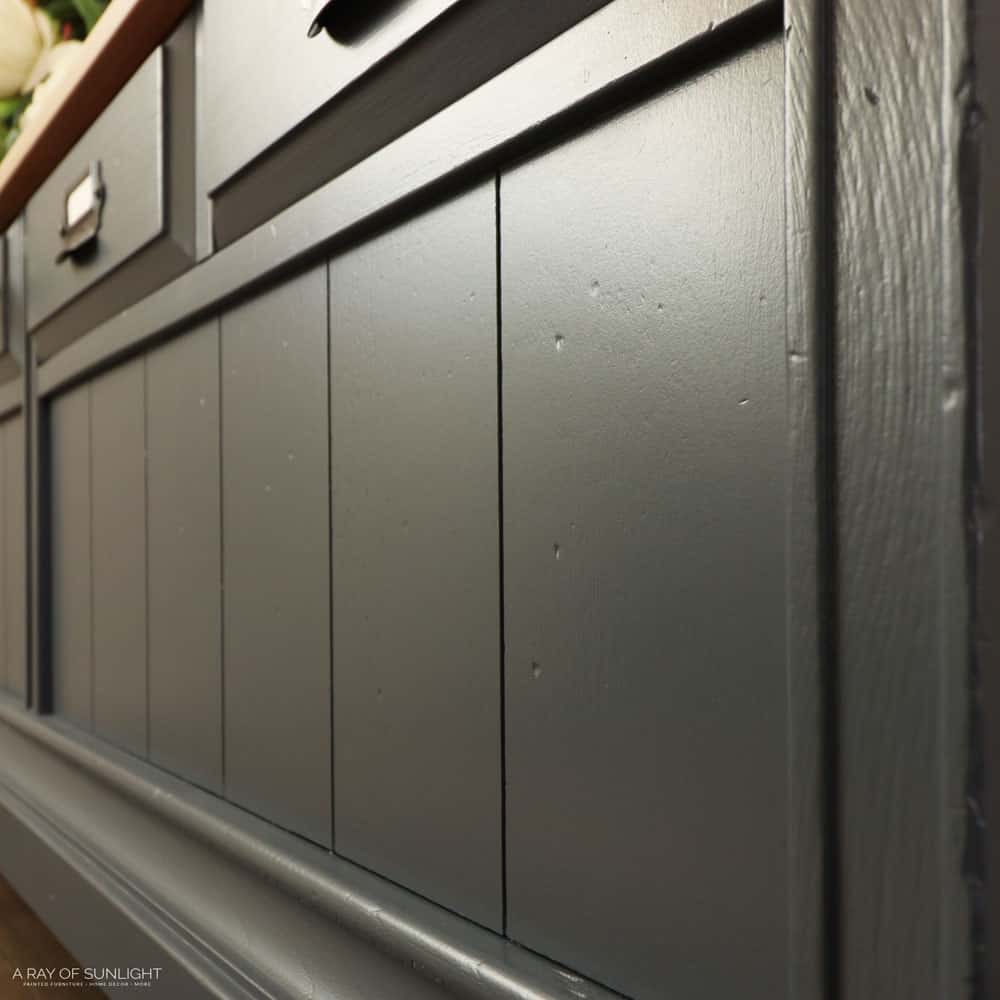
There are honestly NO brush marks in this paint! I tried to get some shots for you with the sunlight so you could see how smooth the paint is.
I also love the whitewashed little feet and the top! And the little card catalog pulls on the fake drawers are some of my very favorite hardware to use!
You might be wondering is two-toned furniture in style? Check out this makeover guide to find out!
More Cedar Chest Makeovers
Follow us on YouTube to get more tips for painting furniture.
Or share your project with us on our Facebook Group and be part of our community. See you there!


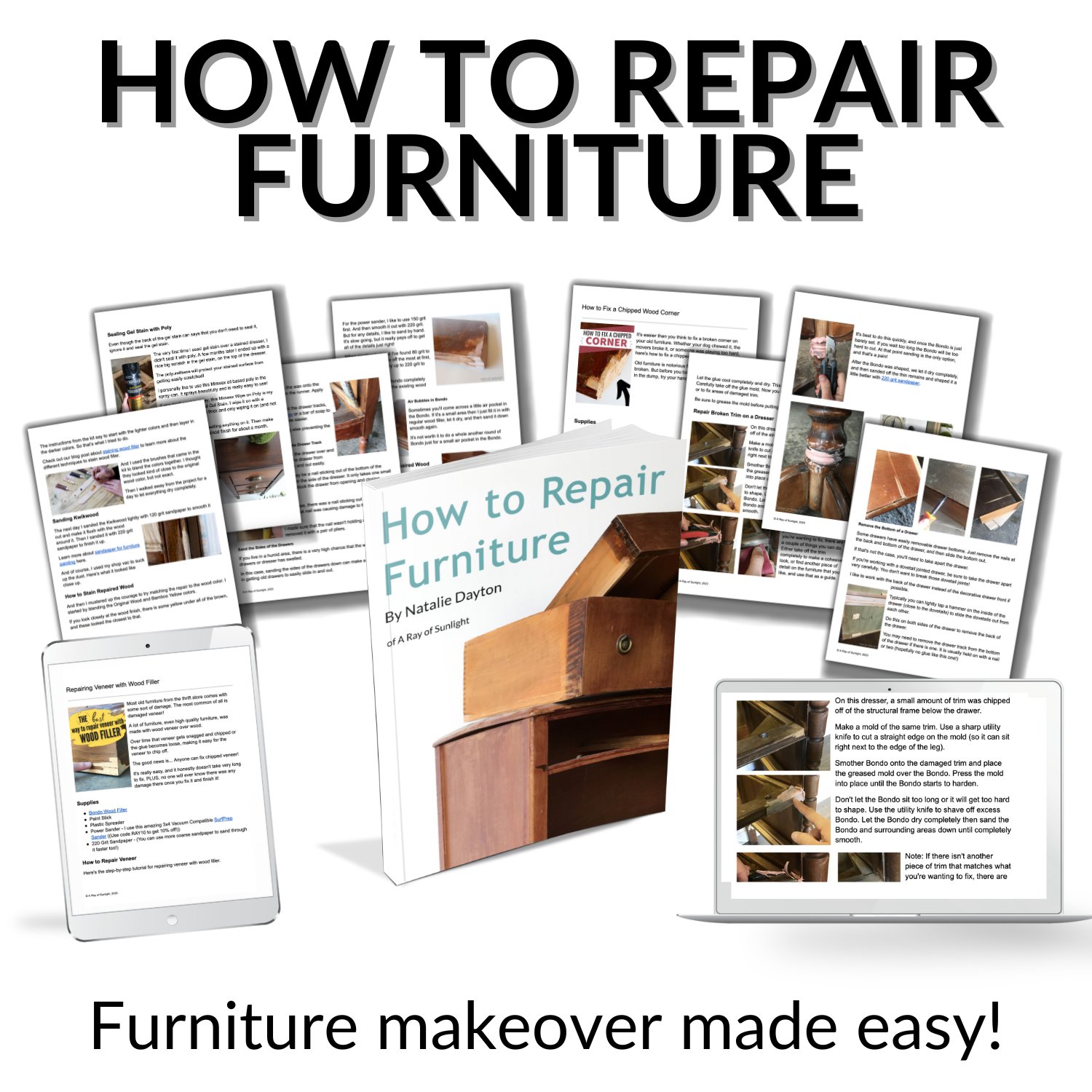
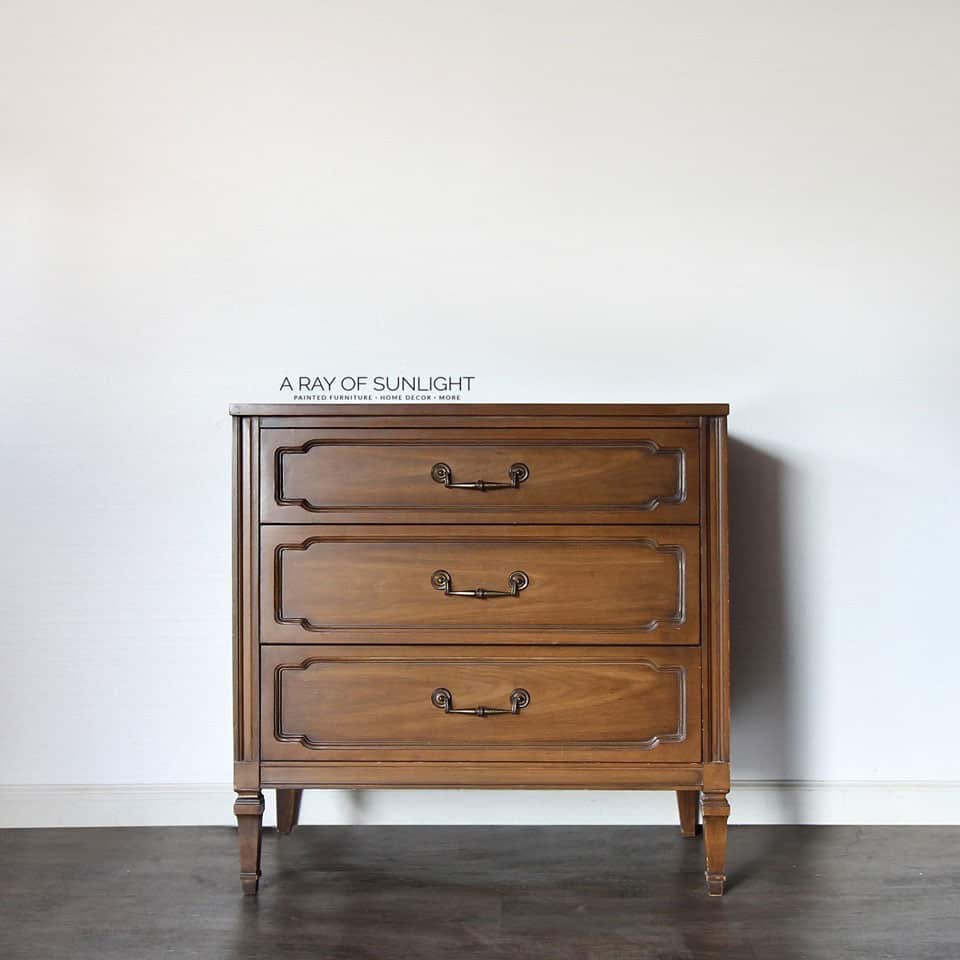
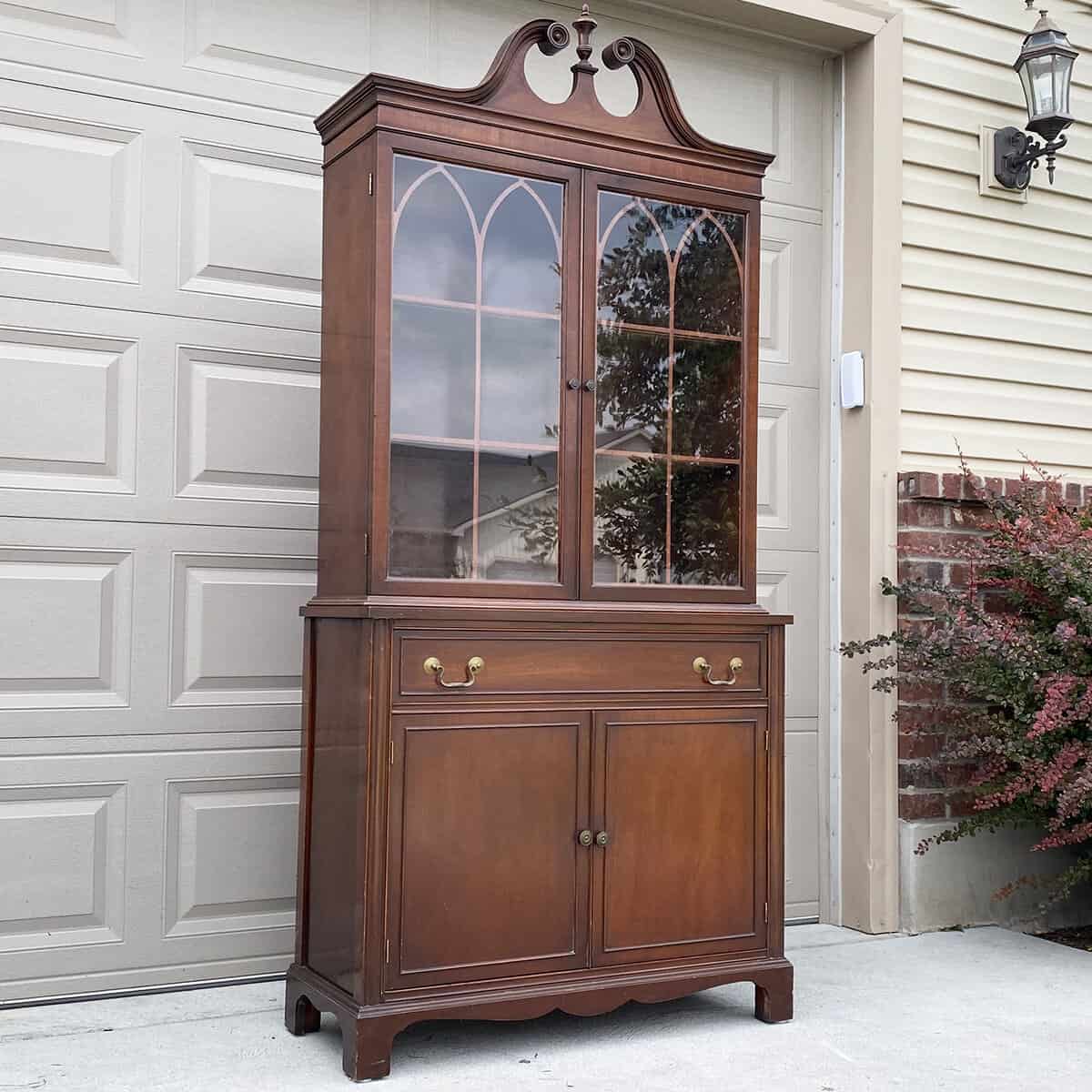
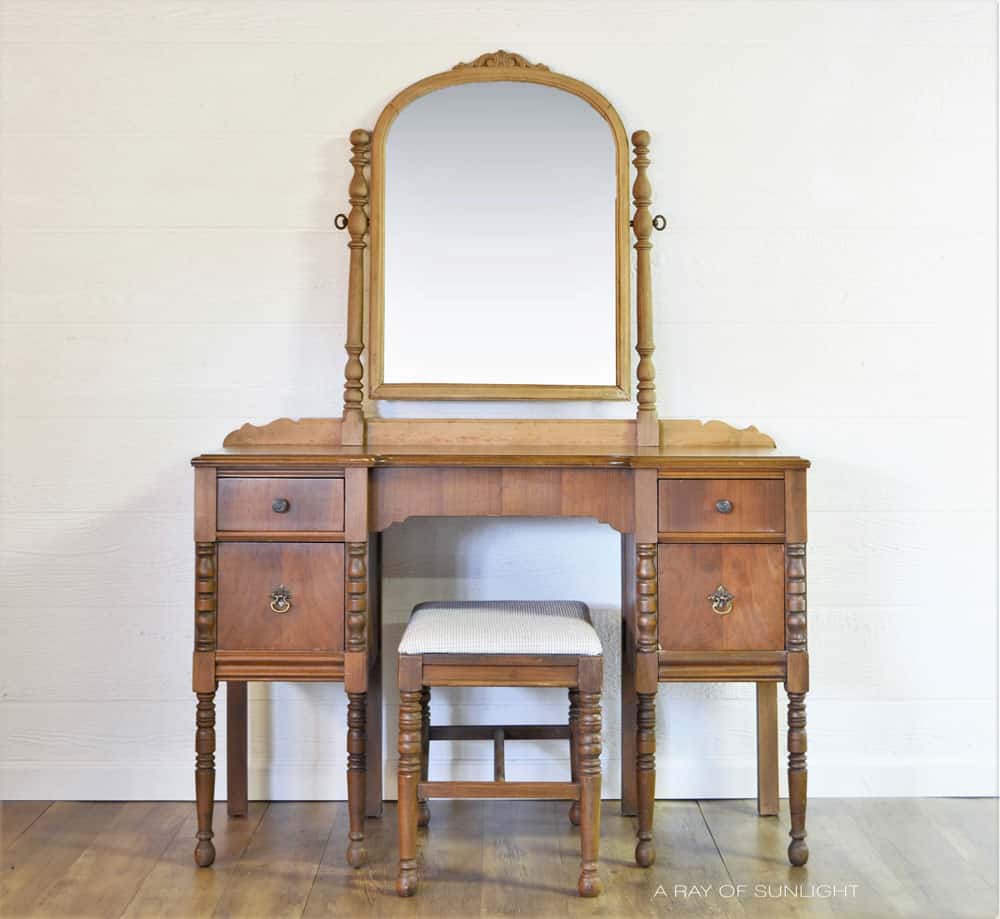

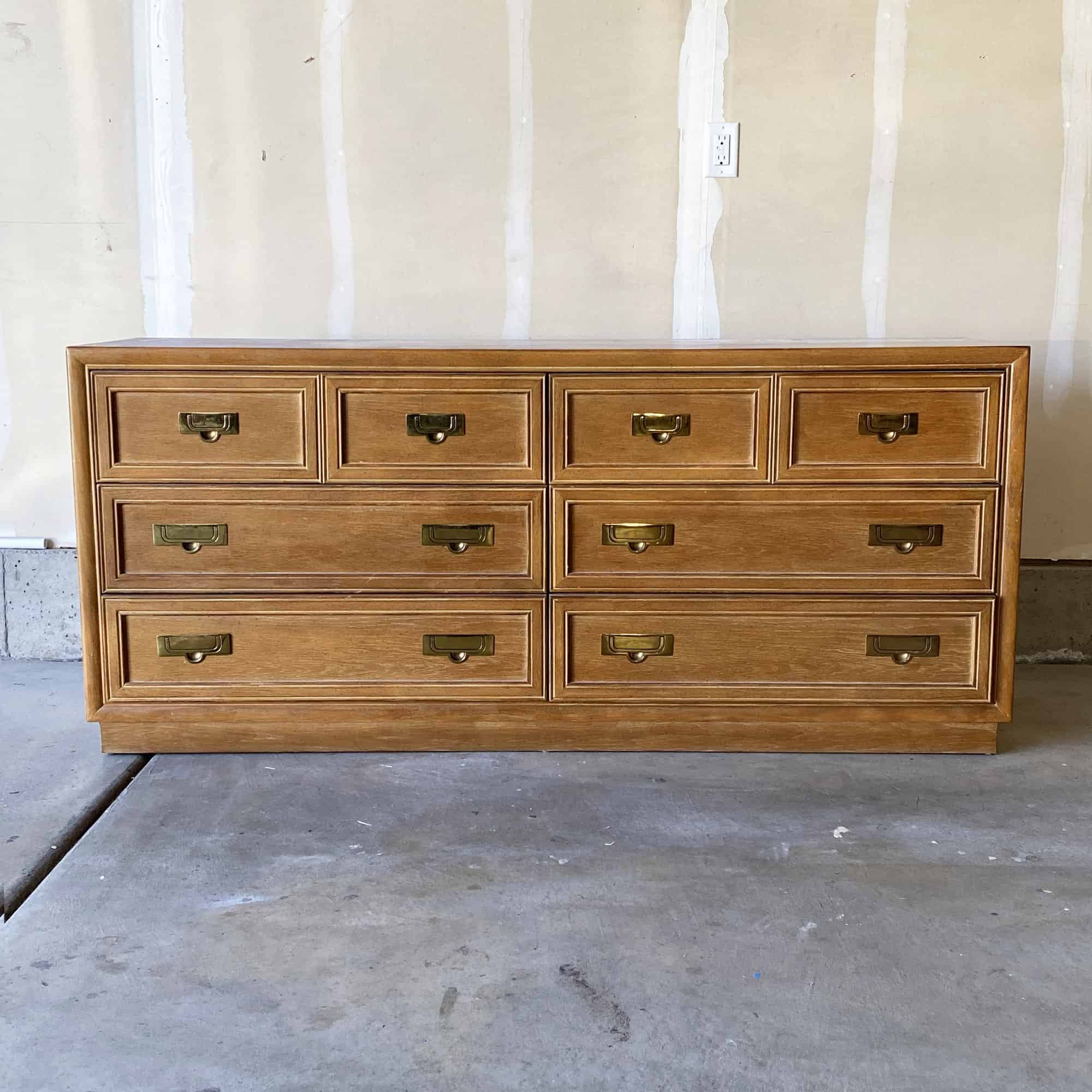
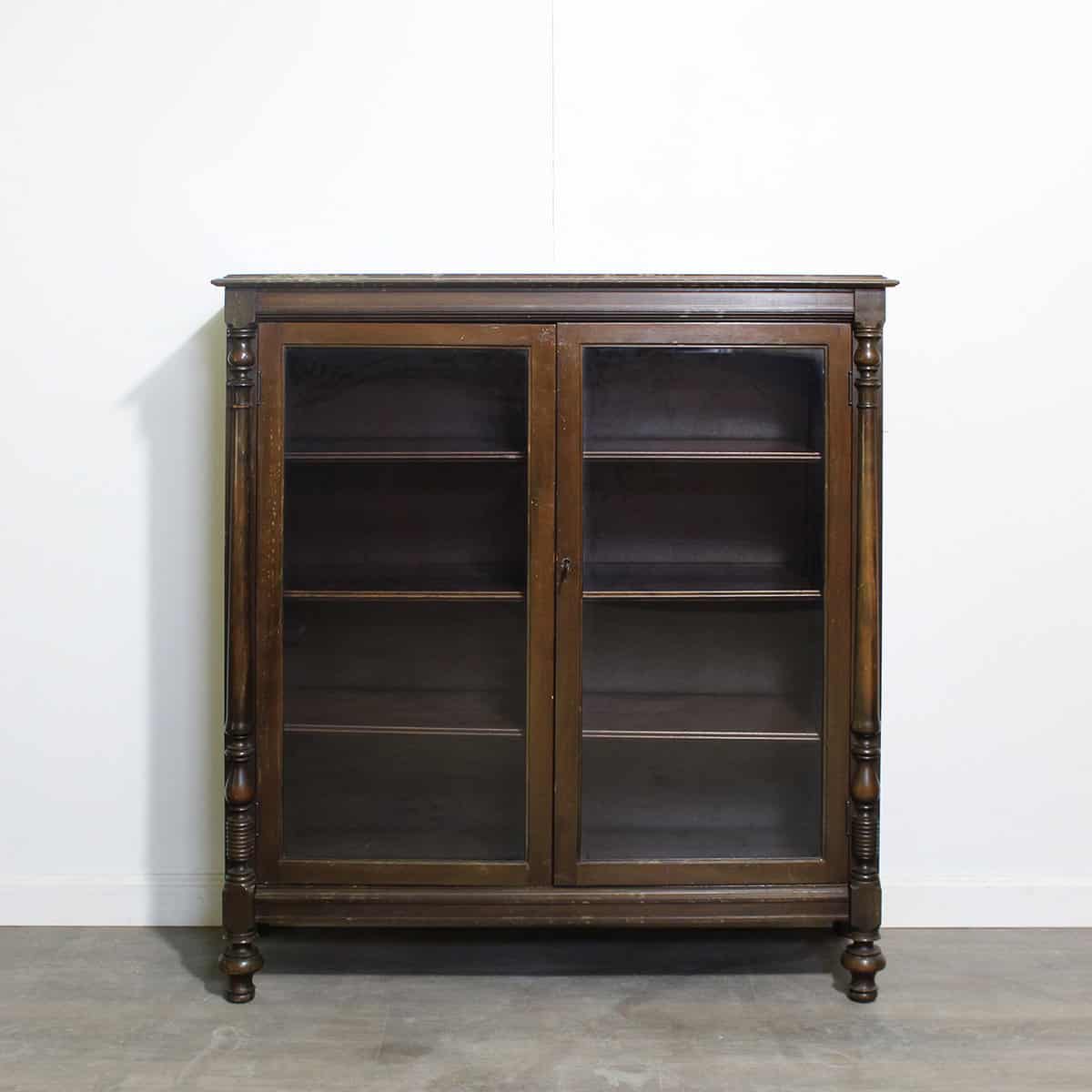

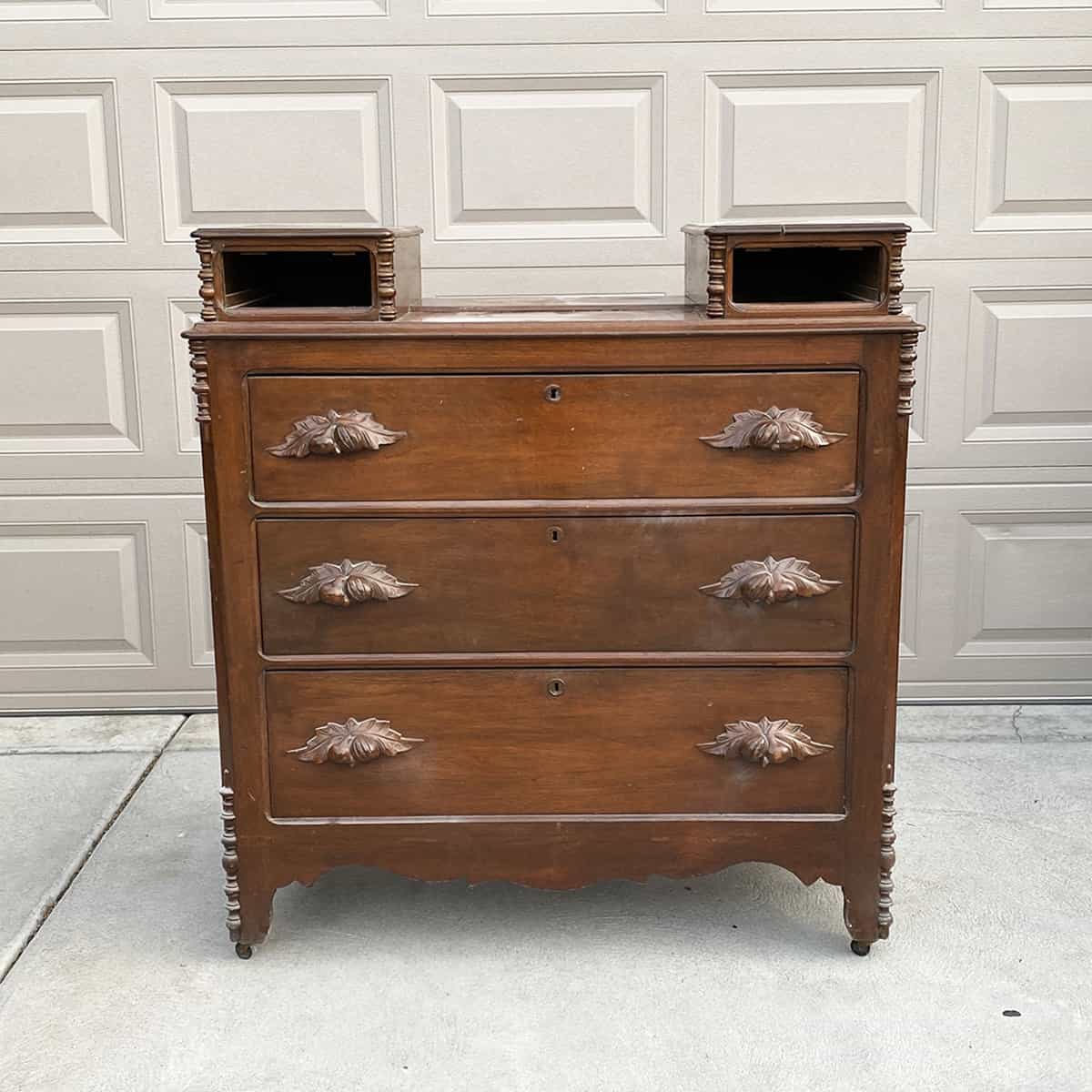


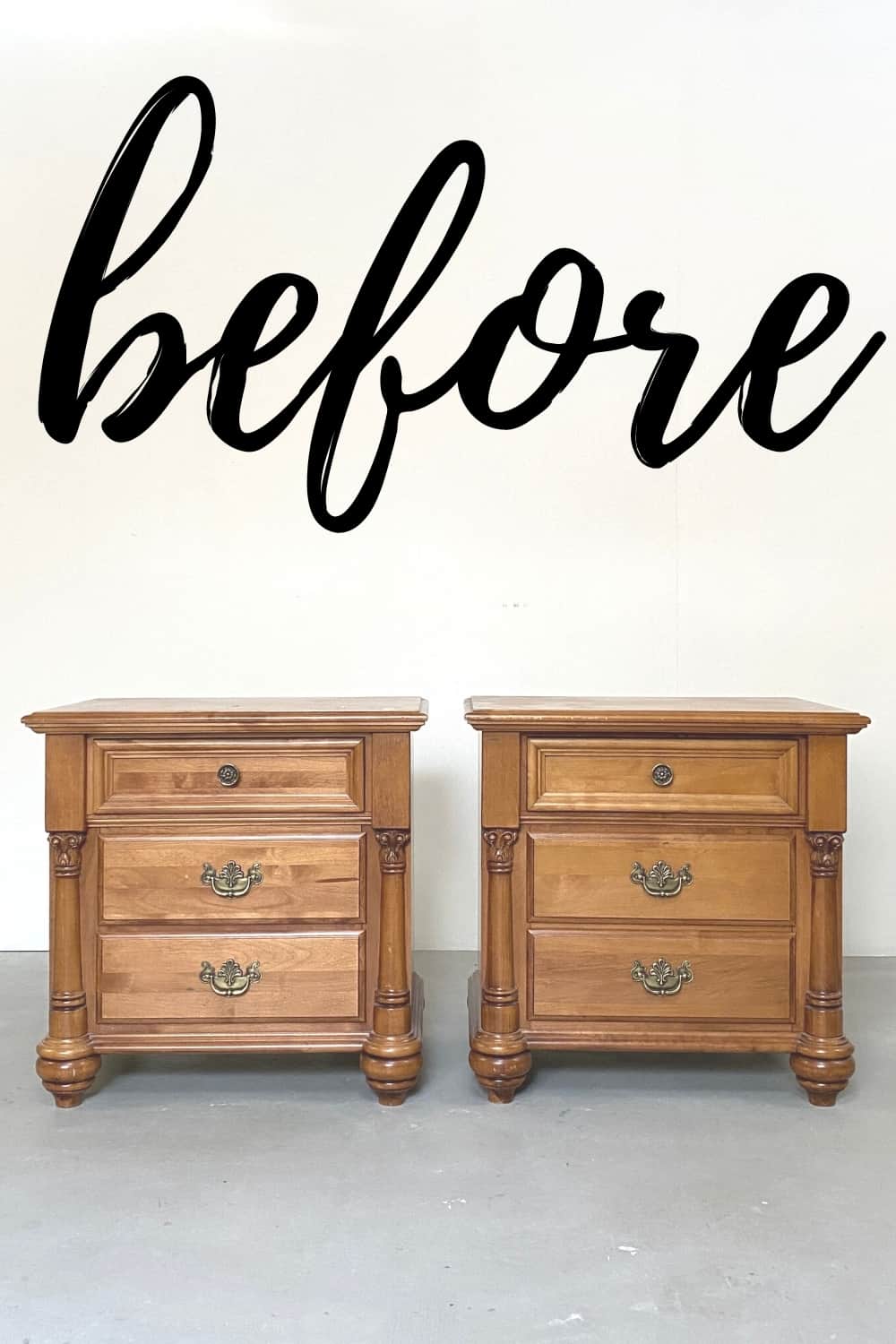
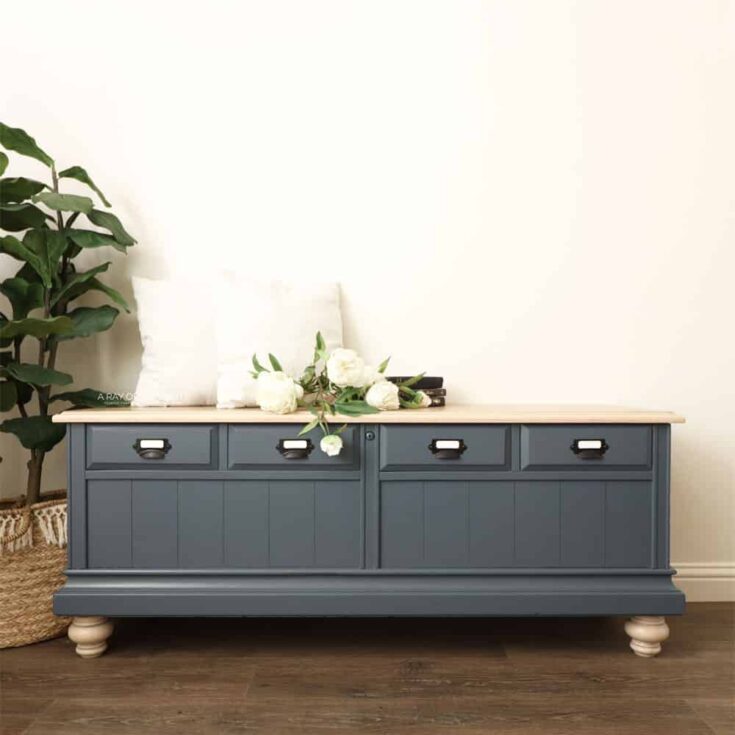



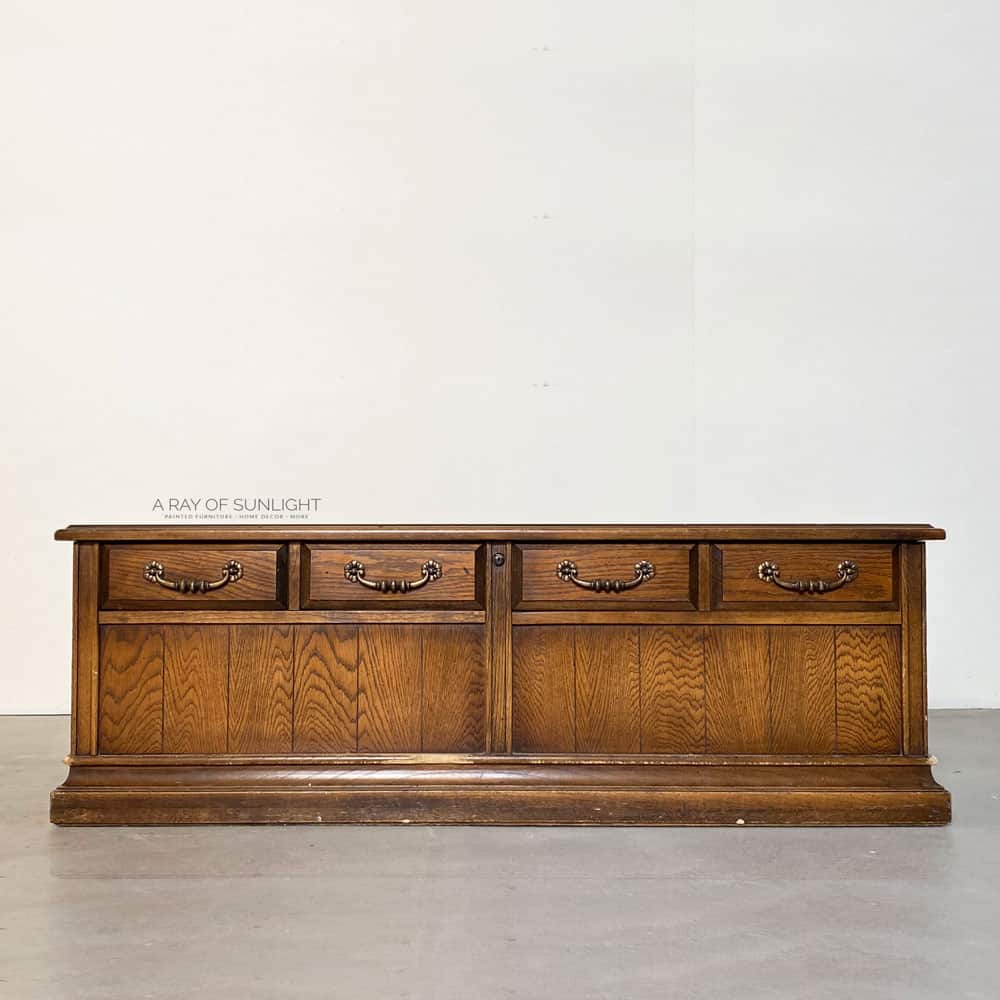
Hi. What do you condition the inside of your ceder chests??????? I’m refinishing my grandpa’s chest! The whole thing smells old….would love to bring out the ceder smell again!!
I just wipe it out with a damp rag and it brings back the smell of the cedar.
How do you know when to use the shellac and when to use the bin primer?
shellac if you want to distress the paint, bin for everything. Dark paint colors over BIN are harder though, so I opt for clear shellac on dark colors. I have only tested clear shellac extensively with chalk, mineral and acrylic paints.
You can do that, but you can also just wipe the cedar with a damp rag and the smell will come back.
I love the green color. I am going to repaint the bottom.of my kitchen island. This is the color I have been looking for. Could you share the name and brand please.
Best wishes,
Donya
Hey Donya! I’m so glad you love the color, but I’m not sure what green color you’re talking about. This cedar chest is a blue, so I’m a bit confused. Would love to help though! Please let me know!